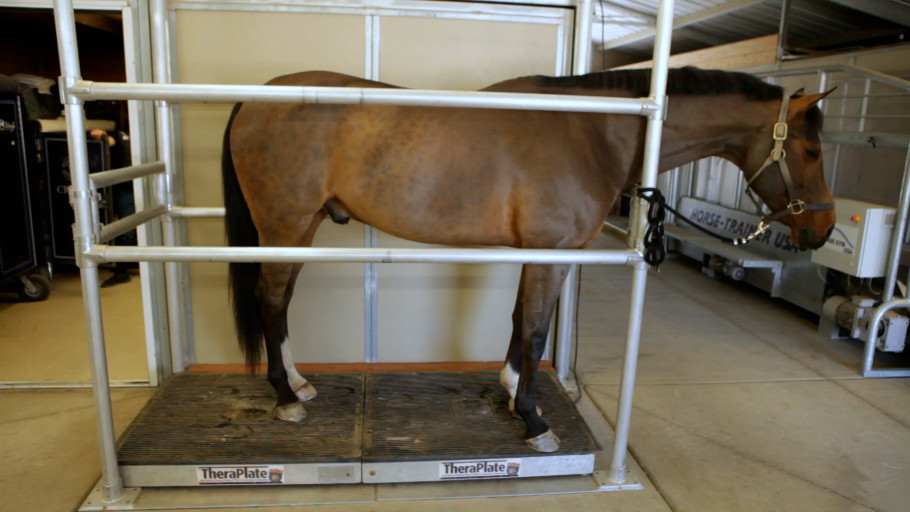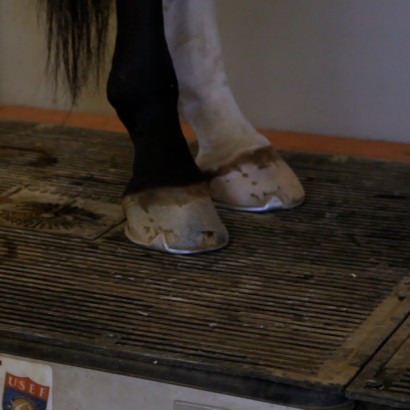Vibration Therapy for Horses
Updated March 29, 2024 | By: Andris J. Kaneps, DVM, PhD, DACVS, DACVSR

Whole body vibration therapy is accomplished by the horse standing on a vibrating plate for treatment. Each manufacturer of vibration plates has their own proprietary wave form, which could utilize vertical, horizontal, or cycloidal vibrations of varying magnitudes and frequencies.
The plates may be sized for one horse standing in place or an entire stall floor. Some vibration plates are portable, so they can travel with you and be used at competitions or training centers away from your home barn. Many horses tolerate the soft buzzing noise of the vibrating platforms well. Veterinarians and equine hospitals have employed vibrating plates as a complementary therapy for a variety of issues.
Benefits of Vibration Therapy for Horses
The physiological benefits of vibration are even used by astronauts to counteract muscle atrophy and bone loss experienced when weightless in space. Here on Earth, vibration therapy for horses has been found to improve bone density and circulation, increase muscle mass, reduce pain and stress, and increase cellular metabolism.
Positive effects of whole-body vibration proven by research on horses include:
- Calming [1]
- Maintenance of bone density [2]
- Increased size of muscle that stabilizes the spine [3] (multifidus muscles)
- Increased hoof growth [4]
These effects are obtained through daily use of vibration therapy for weeks to months. They cannot be maintained if the therapy has stopped. Increased blood circulation is proven in humans treated with vibration therapy. The same effect is likely in horses, but not yet verified with research.
How to Use Vibration Therapy on Horses

- 20–30 minute sessions once or twice daily
- Often used for warm-up and cool-down
- Commonly used in mitigating the effects of stall confinement due to illness or injury
Examples of Vibration Therapy in the Barn
- To promote hoof growth and healing through increased circulation
- As part of a rehabilitation program following a soft tissue injury
- As part of a warm-up or cool-down routine to enhance circulation, suppleness, and calmness
Evidence-Based References
- Carstanjen B, et al. Proc Italian Assoc Equine Veterinarians. 2011:295
- Hulak ES, et al. J Equine Vet Sci 2015;35:393
- Halsberghe BT, et al. Equine Vet Educ 2016
- Halsberge T. Res Vet Sci 2018;119:37-42